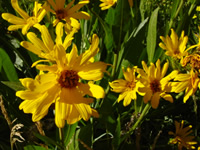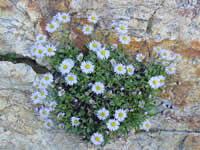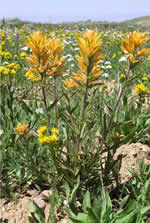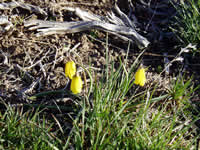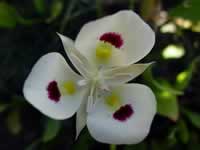USDA Forest Service Celebrating Wildflowers
|
|
|
Genetic ConsiderationsThe Importance of Local Ecotype: Guidelines on the Selection of Native PlantsBy Wild Ones Local Ecotype Committee The following guidelines are intended to assist individuals in their natural landscaping efforts. They were developed by the Wild Ones committee of national board members and others who read widely in the scientific literature and consulted with experts. While there is ongoing debate within the restoration community concerning the issues below, we offer the following guidelines with the hope that they will help make our natural landscapes places of health, diversity, and ecological integrity. "Wild Ones Natural Landscapers advocates the selection of plants and seeds derived, insofar as is possible, from local or regional sources at sites having the same or similar environmental conditions as the site of planting. Such plant materials are often termed the local ecotype." Environmental ConditionsThese include everything from soil, climate, elevation, drainage, aspect (such as north/south slope), sun/shade, precipitation, etc. Local or Regional SourcesPlant material that originates in and is native to your geographic region is generally the best to use. These regions have ecological, not political boundaries; i.e., it is better to use a source from your geographic region but outside your state than to use a source from a different geographic region inside your state. Such regions are often referred to as ecoregions by scientists. The ecoregions within the U.S. are best delineated by The Nature Conservancy in the U.S. and the Conservation Data Centers in Canada. (Maps of the ecoregions can be obtained from these groups; a copy of each set of maps is in the Wild Ones library.) Why Choose Local Ecotypes?
In general, the more closely you match the environmental conditions of the source of your plant material to that of the planting site, the better the plants will grow. Studies show that this is because species have become genetically adapted to the local conditions to varying degrees—some species more than others. Since there is little species-specific information, it is best to take a conservative approach so plantings will do better both in the short term and in the long term. Example: A red maple from the deep South will not do well in the North. Also, a red maple from a lowland will not do well if transplanted to an adjacent upland site. Exception: Threatened and endangered species which have reduced genetic variability, may need an infusion of genetic variability from plants from other, maybe distant locales, in order to ensure their survival over the long term. Work with such species should be conducted under the supervision of the state and federal agencies which have jurisdiction over them.
An all-important concern today is the preservation not only of a diversity of species, but also of the genetic diversity within each species. A native species varies genetically in its adaptation to the particular localities and environmental conditions under which it grows. This results in a number of ecotypes of the same species or gradations (clines) between populations. You can help preserve the local ecotypes in your area by using them in your landscaping. There can also be significant genetic variation within an ecotype in terms of form, size, growth rate, flowering, pest resistance, etc. You can help preserve this gene pool by asking for seedling stock, not clonal stock or cultivars. How to Find Your Local EcotypesTo prevent the local extinction of native plants, plants should be bought from reputable nurseries, not dug from natural areas. Exception: Plants rescued from a site slated for immediate development. (However, every effort should be made to save such sites whenever possible.) Where to BuyA list of nurseries carrying native plants of local ecotypes can often be obtained from local nature centers, from state natural resource Departments, from local Wild Ones chapters or from native plant organizations. Nature centers or nurseries dealing exclusively with native plants are more apt to have stock of local ecotypes.
Seed CollectionWhen collecting seeds, collect from many individual plants from within the same ecotype of each species, rather than taking seeds from only the biggest plant, for example, and do not take all the seeds from any plant. This will help preserve and increase the genetic variation of the population. Also, be sure to get permission for seed collecting; it is not allowed in some natural areas. Document Your ProjectKeep records of the origins of the plant material you use. This is particularly important for large-scale restorations, especially if they are at nature centers or other places of education. Detailed records on sources of plants used can help us understand their success or failure and adapt our plant selection strategies as needed. This may become increasingly important given the changes in climate expected with global warming. This guideline has been drafted by the Local Ecotype Committee: Pat Armstrong, Lorraine Johnson, Christine Taliga, and Portia Brown, with final revisions made by committee chair, Mariette Nowak, August 7, 2001, and revised March 19, 2002. National OrganizationsFor more information:
|
||||||||||||||||
| NOTE: PDF format links require the Adobe Acrobat Reader to view. | ||||||||||||||||
| top | Disclaimers | FOIA | Privacy Policy | Quality of Information | Photo Credits & Use |
Location: http://www.fs.fed.us/wildflowers/nativegardening/genetics.shtml
Last modified: Tuesday, 24-Jun-2008 21:54:49 EDT
